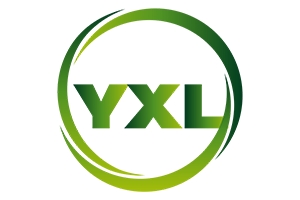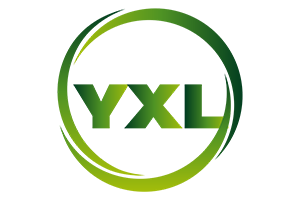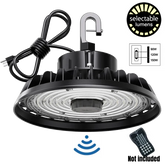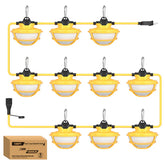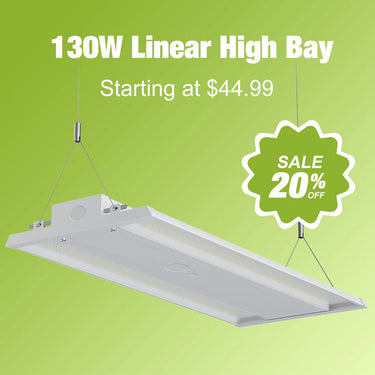What Are the Maintenance Requirements for High Bay Lights?
High bay lights are workhorses in industrial and commercial spaces—warehouses, manufacturing plants, gymnasiums, and distribution centers rely on them for consistent, long-lasting illumination. While modern LED high bay lights (the most common type today) require far less upkeep than traditional metal halide or fluorescent fixtures, they still need regular maintenance to preserve performance, extend lifespan, and avoid unexpected failures. Neglecting maintenance can lead to dimmed light, increased energy use, or even safety hazards (e.g., faulty wiring, falling fixtures). Below is a comprehensive guide to the maintenance requirements for high bay lights, organized by frequency and priority.
1. Routine Visual Inspections (Monthly)
Regular visual checks are the first line of defense against minor issues turning into major problems. These quick, non-invasive inspections can be done during regular facility walks or scheduled monthly checks:
What to Inspect:
- Fixture Housing & Mounting: Check if the high bay light is securely mounted to the ceiling or suspension system. Look for loose bolts, damaged brackets, or signs of wear (e.g., rust, cracks) that could cause the fixture to fall. For suspended lights, inspect cables or chains for fraying, stretching, or corrosion.
- Lens/Cover Condition: Examine the outer lens or cover for cracks, scratches, or discoloration. A damaged lens can let in dust, moisture, or insects—compromising the fixture’s IP rating and leading to internal component damage. Even small scratches can reduce light output by scattering brightness.
- Light Output Uniformity: Observe if the light is dimmer than usual, flickering, or producing uneven brightness (e.g., dark spots in the beam). Flickering may indicate a loose connection or failing driver; dimness could signal dust buildup or aging LEDs.
- Signs of Overheating: Check the fixture’s exterior (carefully—avoid touching hot surfaces) for excessive heat or discoloration (e.g., yellowing plastic). Overheating often points to a faulty heat sink, blocked ventilation, or a failing driver, which can shorten the LED’s lifespan.
Action Steps:
- Tighten loose mounting hardware immediately.
- Replace cracked or damaged lenses/covers to maintain IP protection.
- Note any dimming or flickering and schedule a deeper inspection (see Section 3).

2. Cleaning (Quarterly, or More Often in Dusty/Wet Environments)
- Reduce light output by 20–30% (as dust blocks and scatters light).
- Trap heat, causing overheating and accelerating LED degradation.
- Corrode metal parts (especially in damp or chemical-rich environments).
How to Clean Safely:
- Turn Off Power First: Always disconnect the fixture from the electrical supply to avoid shock. Wait 10–15 minutes for the fixture to cool down (LEDs and drivers can stay hot after use).
- Lens/Cover Cleaning: Remove the lens (if removable) and wipe it with a soft, lint-free cloth dampened with mild soap and water (avoid harsh chemicals like ammonia, which can damage plastic). For stubborn grime, use a soft-bristled brush (e.g., a paintbrush) to gently scrub. Dry thoroughly before reattaching to prevent moisture buildup.
- Heat Sink Cleaning: The heat sink (usually a metal grid or finned structure on the fixture’s top or back) dissipates heat from the LEDs. Use a compressed air canister or a vacuum with a soft brush attachment to blow/ suction away dust. Avoid using water on the heat sink—moisture can damage internal electronics.
- Internal Components (If Accessible): For fixtures with removable panels, lightly dust internal parts (e.g., drivers, wiring) with a dry brush—only if you’re trained to handle electrical components. Never touch exposed wires or connectors.
Frequency Adjustments:
- Dusty environments (e.g., manufacturing plants, construction warehouses): Clean monthly.
- Wet/damp environments (e.g., food processing plants, loading docks): Clean bi-monthly to prevent mold or corrosion.
- Clean, dry spaces (e.g., retail distribution centers): Quarterly cleaning is sufficient.

3. Electrical System & Component Checks (Semi-Annually)
Key Inspections:
- Driver Testing: The driver converts AC power to DC power for LEDs. A failing driver often causes flickering, dimming, or complete shutdown. Technicians can use a multimeter to test the driver’s voltage output—if it’s outside the manufacturer’s recommended range, the driver needs replacement.
- Wiring & Connections: Check internal and external wiring for fraying, insulation damage, or loose terminals. Loose connections can cause arcing (sparks), which risks fire and damages components. Corroded terminals (common in damp areas) should be cleaned or replaced.
- Capacitors & Ballasts (For Older Fixtures): If you still use metal halide or fluorescent high bays, inspect ballasts (which regulate current) and capacitors for bulging, leaking, or burning smells. These parts have short lifespans (3–5 years) and should be replaced at the first sign of failure.
- Grounding: Ensure the fixture is properly grounded to prevent electrical shock. A technician can test the grounding system with a continuity tester.
Action Steps:
- Replace failing drivers, ballasts, or capacitors immediately—using manufacturer-approved parts (generic parts may not be compatible and can void warranties).
- Repair or replace damaged wiring to eliminate fire risks.

4. Replacement of Wearable Parts (As Needed, Based on Lifespan)
LEDs:
- Lifespan: LED high bays typically last 50,000–100,000 hours (5–10 years of continuous use). However, brightness will gradually decrease (this is called “lumen depreciation”).
- Replacement Trigger: Replace LEDs when their brightness drops to 70% of their original output (known as the “L70” rating). Most modern fixtures have LEDs integrated into modules—you may need to replace the entire module (not just individual LEDs) for consistency.
Drivers:
- Lifespan: Drivers often fail before LEDs, with a typical lifespan of 30,000–50,000 hours (3–5 years).
- Replacement Trigger: Replace drivers if they cause flickering, dimming, or complete power loss—even if the LEDs are still functional. Using a mismatched driver can damage LEDs, so always use the manufacturer’s recommended model.
Lenses/Covers:
- Lifespan: Plastic lenses can yellow or become brittle after 3–5 years (especially in UV-exposed areas, like warehouses with skylights).
- Replacement Trigger: Replace lenses when they are heavily scratched, yellowed, or cracked—even if they don’t appear to be leaking. Yellowed lenses reduce light output and can make the space feel dim.
Gaskets/Seals:
- Lifespan: Rubber or silicone gaskets (which seal the lens to the fixture, maintaining IP rating) degrade over time (2–4 years), especially in damp or chemical environments.
- Replacement Trigger: Replace gaskets if you notice moisture inside the fixture or if the lens no longer fits tightly. Damaged gaskets break the IP seal, leading to internal corrosion.

5. Specialized Maintenance for Harsh Environments
- Clean heat sinks monthly (instead of quarterly) to prevent dust from blocking ventilation.
- Use anti-corrosion spray on metal mounting hardware to prevent rust.
- Inspect internal components every 3 months for dust buildup (even if the lens is intact).
- Check gaskets and seals monthly for wear or damage—replace immediately if compromised.
- After cleaning, ensure all parts are 100% dry before reinstalling to prevent mold or short circuits.
- Use fixtures with IP67 or higher ratings (waterproof) and have a technician inspect for water intrusion semi-annually.
- Tighten mounting hardware monthly (vibration can loosen bolts).
- Use vibration-resistant fixtures (labeled “anti-vibration” or compliant with IEC 60068-2-6) and inspect internal wiring for loose connections every 3 months.

6. Documentation & Warranty Compliance
- Tracking fixture performance over time (e.g., when LEDs start to dim, how often drivers fail).
- Proving compliance with manufacturer warranty requirements (many warranties require regular maintenance to remain valid).
- Dates of inspections, cleanings, and component replacements.
- Names of technicians who performed the work.
- Parts used (including model numbers and manufacturer information).
- Notes on issues found (e.g., “flickering observed on Fixture #12; driver replaced 10/15/2024”).
- Keep copies of purchase receipts, warranty documents, and maintenance records in a secure location.
- If a fixture fails within the warranty period, contact the manufacturer with your maintenance logs—this will speed up the claim process.
